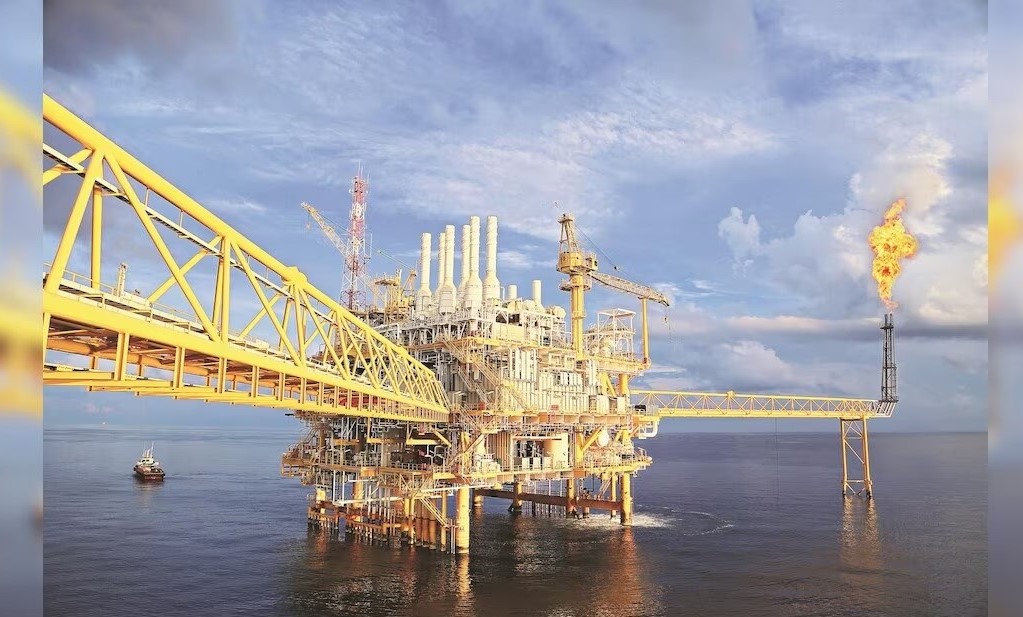The Centre’s wildlife panel has approved a proposal to carry out oil and gas exploration in the eco-sensitive zone of the Hoollongapar Gibbon Wildlife Sanctuary in Assam’s Jorhat district. The Standing Committee of the National Board for Wildlife (NBWL), chaired by Union Environment Minister Bhupender Yadav, approved the proposal by Vedanta Group’s Cairn Oil & Gas during its meeting on December 21, according to the minutes of the meeting.
Assam’s principal chief conservator of forests (wildlife) and chief wildlife warden had recommended clearance for the project in August last year, citing “national interest.” The Forest Advisory Committee of the Union Environment Ministry had also granted in-principle approval during its meeting on August 27 last year.
According to the minutes of the NBWL meeting, a team comprising officials from the Union Environment Ministry, the Wildlife Institute of India (WII), and the Assam Forest Department inspected the project site, located about 13 km from the sanctuary, on November 15. The inspection committee found that exploratory drilling would cause minimal damage but said commercial drilling would not be allowed. Vedanta Group has given a written assurance that no commercial drilling will be conducted at the site.
A senior official in the ministry pointed out that exploratory drilling is a key step in hydrocarbon extraction, which could lead to commercial drilling. Another official said the inspection committee’s report recommended no oil or gas extraction from within the eco-sensitive zone (ESZ), even if reserves are discovered. The officials said Vedanta Group has committed that exploration at the site will only be for identifying hydrocarbon reserves. Any extraction, if reserves are discovered, will be carried out from outside the ESZ.
The company also assured that no hazardous substances would be used during the exploration process, the officials said. They said that the project site lies in a disputed area on the Assam-Nagaland border. The inspection team had to cross a Nagaland check post and was received by the border magistrate of Nagaland and local Naga residents.
Local communities informed the team that no drilling operations would be allowed without permission from the Village Council and the Nagaland government, the officials said. The Hoollongapar Gibbon Wildlife Sanctuary spans 20.98 sq km, while its ESZ covers 264.92 sq km. The large ESZ ensures connectivity between the sanctuary, the Dissoi Valley Reserve Forest, and forested areas in Nagaland. This connectivity is crucial for the seven species of primates found in the area. The officials highlighted that the sanctuary is already under stress due to human activities. A railway line passing through the sanctuary is also set to be electrified, a proposal recommended by the Standing Committee.
Tags: Assam, Centre, Gas Exploration, NBWL



Recent Posts
Scandlines Nears Delivery of Zero Emissions Ferry Following Successful Sea Trials
India faces emission roadblocks with rising net-zero demands
Green Energy Resources invests in two electric Liebherr LHM 550
NYK Launches Continuous Use of Bio LNG Fuel on Car Carriers to Advance Decarbonization Goals
Yang Ming Expands Fleet with Methanol and LNG Dual-Fuel Vessels Under Fleet Optimization Plan
ClassNK Advocates Speed Gap Monitoring to Optimize Fuel Efficiency in Heavy Weather
Wärtsilä’s retrofit package for the Corsica Linea ferry Pascal Paoli has resulted in fuel savings of up to 22 percent Corsica Linea
COSCO Shipping Names Second Methanol Dual-Fuel Containership in Yangzhou